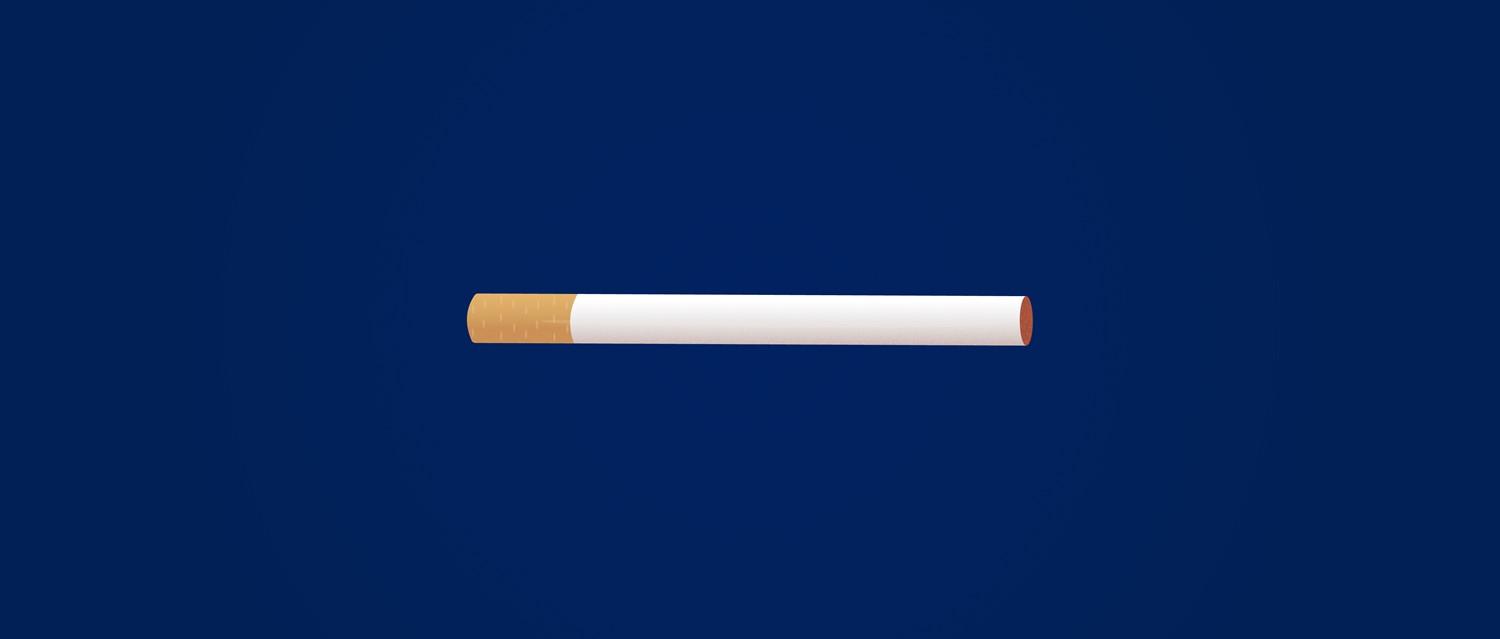
Safer than cigarettes? The rise of vaping in schools
Peer reviewed by Dr Krishna Vakharia, MRCGPAuthored by Amberley DavisOriginally published 19 Sept 2023
Meets Patient’s editorial guidelines
- DownloadDownload
- Share
- Language
- Discussion
The range of playful vape flavours, colours, and shapes may look a lot less scary to a child than the gory, unnerving photos of diseased organs on cigarette packets - but is vaping really that much safer? As vaping becomes more widespread in UK schools, we look at the known vaping side effects, and ask whether it's dangerous for parents to view vaping as a deterrent or safe alternative to smoking.
In this article:
"Some parents are actively buying vapes for their children, believing this keeps them away from cigarettes - and this makes it hard to deter vaping in schools." - Harry, an English teacher from Portsmouth.
Continue reading below
The rise of vaping in schools
In recent years, a huge cultural shift has happened on our high streets - and in our schools. The rise of electronic cigarette smoking, also known as vaping, was first welcomed in early 2000s society to help smokers quit, as a healthier tobacco-free alternative.
Now, vapes and their colourful array of packaging and flavours are enticing more and more non-smokers - and the youngest generation are leading this newest addiction. But are vapes really safer than cigarettes for your child?
In the UK, vaping in schools is on the rise1:
By April 2023, the number of children experimenting with vaping had grown by 50% year on year.
In 2023, 20.5% of children had tried vaping - up from 15.8% in 2022 and 13.9% in 2020.
Of these children, 7.6% were vaping regularly.
15% of 11-15 year olds, 34% of 16-17 year olds ,and 38% of 18 year olds have tried vaping at some point.
4.6% of 11-15 year olds, 15% of 16-17 year olds, and 18% of 18-year-olds currently and regularly vape.
Harry is a secondary school teacher in Portsmouth where vaping has become a fast-growing health concern. "Compared to cigarettes and their fumes, it's difficult to detect vaping in schools, and this is part of the issue.
"But from what we can see, it's rife. I've caught students vaping in class as young as 11 and 12 years old. For some children, it's the first thing they do as soon as they walk out the school gates. From what i've seen in the past year, e-cigarettes have completely overtaken tobacco cigarettes - for today's teens it’s all vapes, no fags."
Harry's school has a strict behaviour policy on vaping. If a child's caught, their parents are called in and there's the possibility of suspension. However, this isn't proving to be enough of a deterrent.
"Many parents believe vaping products to be a healthy alternative to smoking - and some have told us they're actively buying their children vapes to keep them off cigarettes," adds Harry.
The risks of tobacco smoke are more widely known and researched than vaping side effects - yet the latest data suggests that many young people are vaping who may never have smoked. Since 2021, the number of children currently vaping has remained higher than those currently smoking - 7.6% compared to 3.6% in 2023. What's more, nearly half of children who have never smoked have tried vaping at some point1.
Dangers of vaping for teens
With so many non-smoking young people trying vapes, it's important that kids, parents, and educators are aware that there are known side effects of vaping.
Your brain doesn't stop developing until your mid-twenties, and this leaves children and young people who vape even more vulnerable to long-term health problems.
Nicotine can harm the parts of the adolescent brain that control learning, attention, mood, and impulse control. Young users are more likely to develop nicotine addiction, mood disorders, and impulse control disorders.
Developing brains build synapses faster than adult brains to help them learn. This means young people can get addicted more easily than adults, as addiction is a form of learning.
Nicotine withdrawal causes irritability, anxiety, restlessness, depression, sleep problems, concentration problems, and cravings.
What will come as a surprise to many parents is that children who vape are more likely to become addicted to smoking and other drugs in the future, because the nicotine primes developing brains for addiction5. This message comes from the Centers for Disease Control and Prevention (CDC), yet crucially it's not reaching the parents who are buying their children vapes to prevent them smoking.
Continue reading below
What are the side effects of vaping?
With so many non-smoking young people trying vapes, it's important that kids, parents, and educators are aware that there are known side effects of vaping.
Instant and short-term vaping side effects include:
Sore and irritated throat and mouth.
Headache.
A persistent cough.
Feeling sick.
While stopping vaping usually resolves these symptoms, experts don't yet fully understand the extent and breadth of the long-term health risks - and there's a growing body of evidence that these e-cigarettes can damage your lungs and heart health.
Can vaping cause lung cancer?
Vaping devices use heat to transform liquid chemicals into a mist that can be inhaled deep into your lungs, coating them in a toxic cocktail. Depending on the brand and flavour, this may contain:
Volatile organic compounds (VOCs) - such as heavy metals and benzene. These are linked to lung cancer and other health problems.
Tiny particles that can be inhaled deep into the lungs - can become lodged, which is particularly dangerous for people with asthma and other respiratory conditions. They can also cause the arteries in the lungs to tighten, increasing your chances of a heart attack.
Dangerous food additives - Diacetyl is a butter-flavoured additive that's considered safe to eat. However, when inhaled directly into the lungs, it can scar the air sacs and cause a type of lung disease called bronchiolitis obliterans - also known as popcorn lung.
Since 2019, the growing number of severe lung injuries related to vaping devices has given rise to the newly termed condition EVALI, which stands for electronic-cigarette vaping associated lung injury.
So, when it comes to lung injuries and disease there are serious vaping side effects. As for lung cancer, while data and research is still relatively thin, there's a growing body of evidence that vaping increases your chances. This is because inhaling these chemicals increases inflammation in your lung's cells and affects how they work.
Can vaping affect blood flow?
The side effects of vaping on your blood vessels are also thought to be serious and life-threatening. Dr Matthew Springer is a professor of medicine in the division of cardiology at the University of California. He explains his findings on e-cigarettes, cigarettes, and heart health - and how they compare.
"It's been known for at least couple of decades that smoking makes blood vessels function less efficiently. They are supposed to expand and tighten in real time as they sense how much blood needs to pass. This allows them to supply blood to the heart and other tissues during times of exertion, keep blood pressure stable, and help prevent heart attacks and strokes."
In two separate studies3,4, Dr Springer and his fellow researchers found that e-cigarette aerosol causes the same effect. What's more, while smoking can create problems that vaping doesn't, the team also discovered that vaping can cause problems that smoking doesn't.
"Vaping, but not smoking, causes changes in blood serum that can make blood vessels more likely to leak. This doesn't mean that blood leaks out, but that more substances can pass from inside to outside the vessel, causing health issues."
Is the flavour of vape significant?
Different flavours may also play a role in possible vaping side effects. Even ingredients that are considered safe to eat may become dangerous when heated and transformed into a mist to inhale.
"With vaping, every time someone adds a new flavour to the e-liquid, that is another chemical or group of chemicals that are potentially harmful in their own right," adds Dr Springer.
Continue reading below
Is vaping better than smoking?
We have very little health data on vapes compared to cigarettes. It's generally assumed that vaping can't be more harmful than smoking - and that the tobacco in smoking makes them the greater threat. "This is logical," says Dr Springer, "given how much we have learned about the harmful effects of smoking and second-hand smoke over the last century. We don't have nearly as much data about vaping because it hasn't been around long enough."
Still, evidence is emerging that vapes can produce some harmful effects that smoking doesn't.
For the doctor and his team, this was a surprise. "We initially expected that serum from vapers would either exhibit the same harmful properties as serum from smokers, or would lack some harmful properties that smoker serum exhibits."
Instead, rather than finding smoking to be the most dangerous activity, the team concluded that vaping and smoking in combination is the worst thing you can do. Dr Springer also shares his thoughts on their individual use.
"I think at this point, it's reasonable to say that vaping without smoking is safer than smoking without vaping, but it's not reasonable to say that vaping is safe or harmless.
"Certainly, vaping causes a lot of problems for the lungs. Regarding cardiovascular health, if someone switches from smoking to vaping completely, it's almost certainly a good change. However, if they replace some smoking with vaping but still continue to smoke, they may experience the harmful effects of each."
Educating the young
Either way, when it comes to school children, the "it's better than smoking" approach is misleading young people, and makes many feel comfortable vaping who wouldn't have otherwise tried smoking. With the assortment of inviting flavours, rainbow colours, and funky shapes available making vaping devices feel fun and approachable, parents and educators have a harder job on their hands when it comes to raising the alarm - and teaching the young that it's by far the best to just breath clean air.
Tips to help you prevent your child from vaping:
Talk openly - educate your child on the dangers and side effects of vaping. Try not to lecture, but start a two way conversation that invites them to be open and honest about temptations and peer pressure at school.
Encourage them to do their own research - children aren't always receptive to their parents concerns, but they may take the health issues more seriously if they read or watch information themselves.
Highlight other vaping issues - if your child cares about the environment, you could point out that not only do they contain one-time-use plastic, but also toxic metals and batteries that can damage wildlife and cause dangerous fires.
Hide the habbit - if an adult in your household vapes, avoid normalising the activity for your child by making sure family members or friends don't vape in front of them.
Further reading
Patient picks for Smoking and vaping

Healthy living
Smoking effects on skin: from ageing to illness
Smoking is bad for you but it's effects on your skin's health may not be the first thing you think of. We explore how this deadly habit can damage the largest organ of the body - the skin.
by Amberley Davis

Healthy living
How to resist the toughest cigarette cravings
Nicotine cravings are triggered by a variety of physical and psychological factors. Knowing what these are, when they are likely to occur and how to distract yourself can go a long way towards helping smokers quit for good. We ask a GP for their advice.
by Julian Turner
Continue reading below
Article history
The information on this page is peer reviewed by qualified clinicians.
19 Sept 2023 | Originally published
Authored by:
Amberley DavisPeer reviewed by
Dr Krishna Vakharia, MRCGP

Ask, share, connect.
Browse discussions, ask questions, and share experiences across hundreds of health topics.

Feeling unwell?
Assess your symptoms online for free
Sign up to the Patient newsletter
Your weekly dose of clear, trustworthy health advice - written to help you feel informed, confident and in control.
By subscribing you accept our Privacy Policy. You can unsubscribe at any time. We never sell your data.